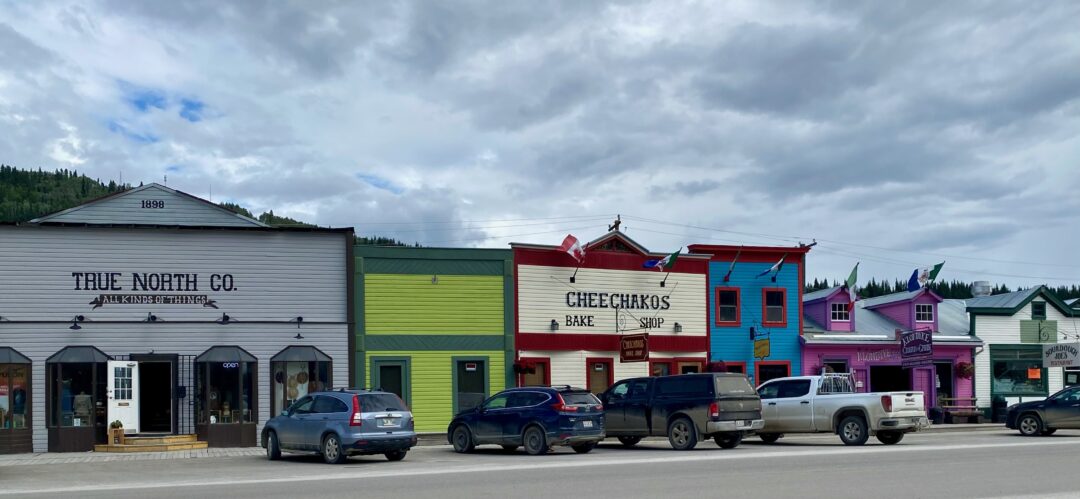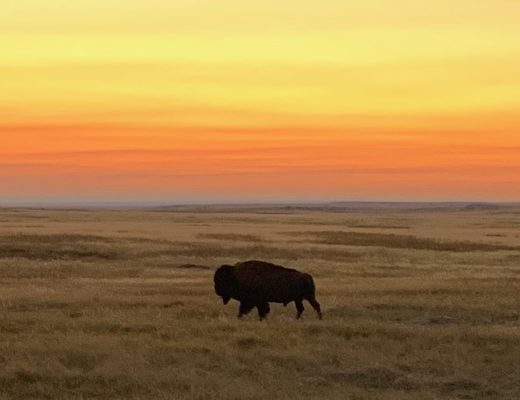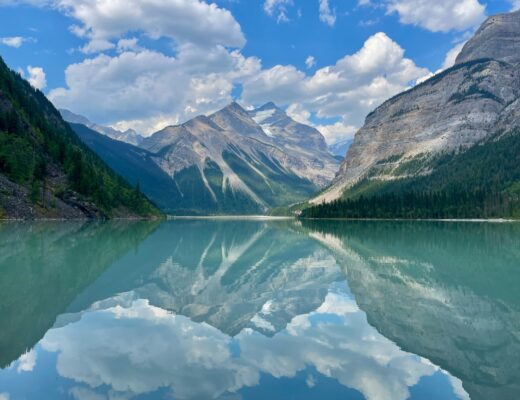Nestled at the confluence of the Klondike and Yukon Rivers, with its wooden boardwalks and street-lined historic buildings it’s easy to forget its 2024 and not the Klondike Gold Rush era of the late 1800s.
The only way to reach Dawson City from the west is to hop a ferry that runs from one side of the Yukon River to the other. There’s a campground on the west side so we took the ferry over to walk the town on the first day and then loaded the RV onto it the ferry the second day to visit the mining areas and be on our way through the rest of the Yukon.
Dawson City is a town that boomed as 30,000 prospectors stampeded, seeking gold in the late 1800s. By 1898, it was the largest city in western Canada, the capitol of the Yukon, and its wealth earned it the nickname “Paris of the North” as high fashion, electricity, telephones, and luxury goods poured in, but the frenzy of the gold rush lasted only 2 years. Strolling through Dawson City today, many of the original buildings have been repurposed and others, like the Palace Grand Theatre, carefully restored. Historic signs describe many of them.
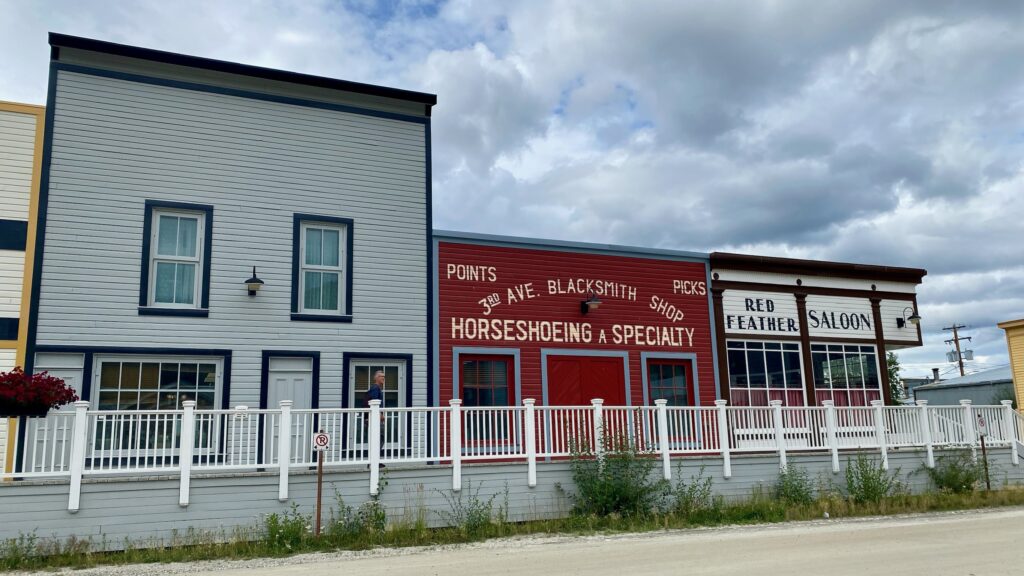
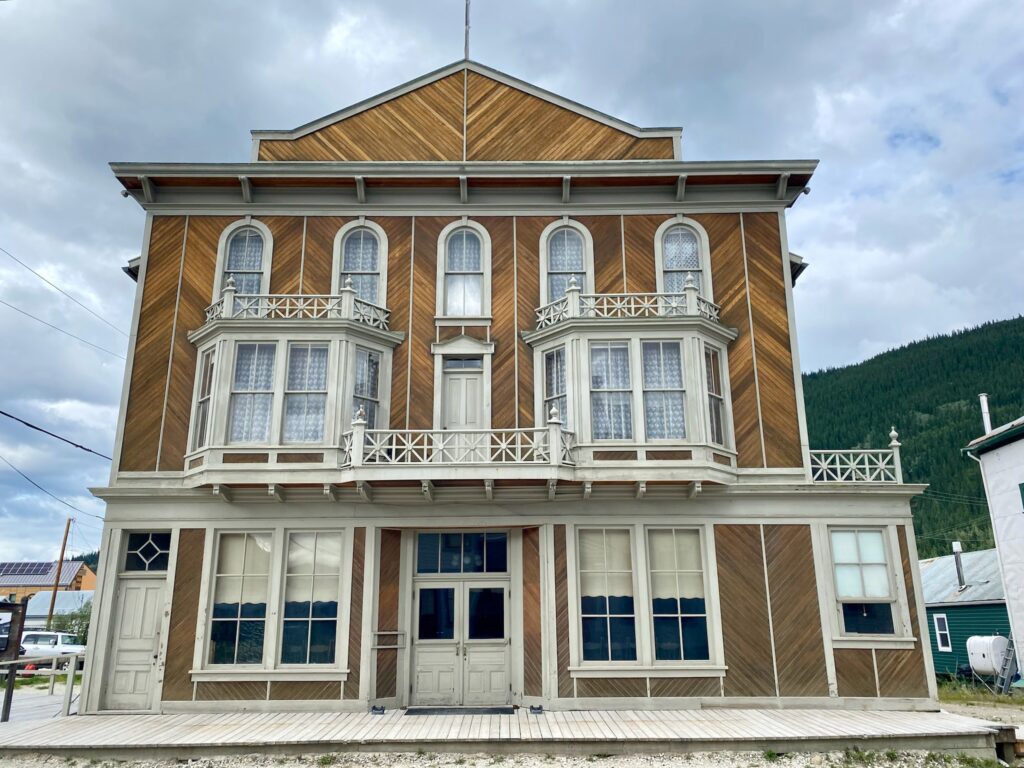
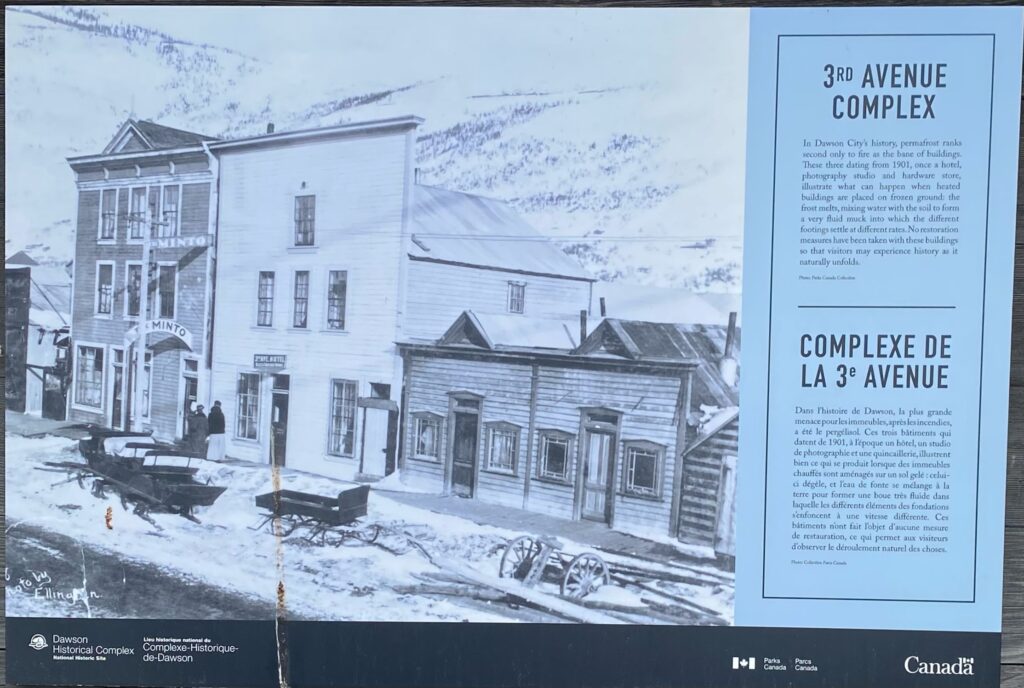
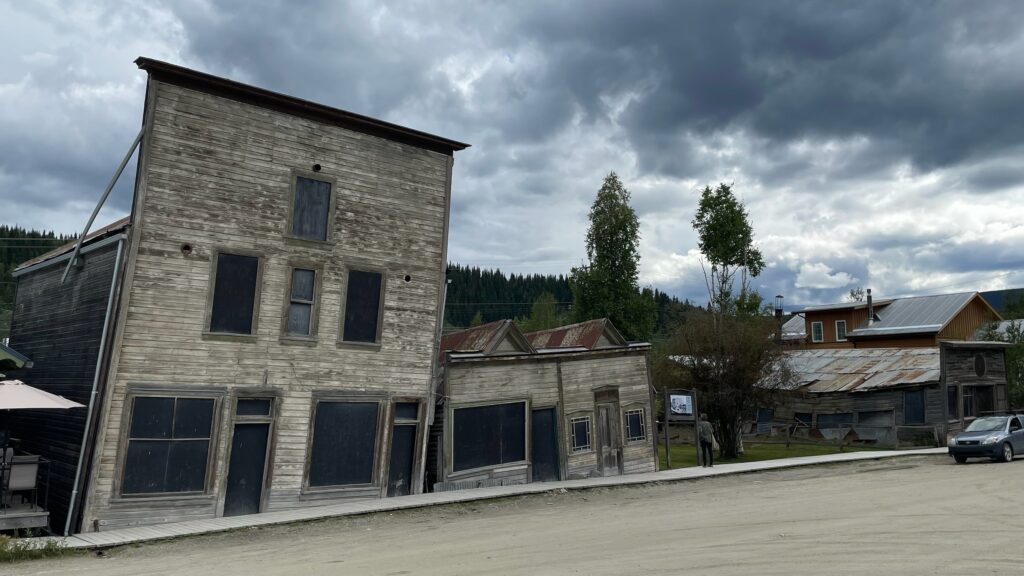




Although early gold discoveries were from pans in area streams, the Dawson City Visitor Center has a great film about the challenges of retrieving gold from the hills which required thawing the permafrost. First they built fires to warm the permafrost, then they used a pipe that delivered steam called a steam point. Strangely, they found that cold water through the steam points was just as effective and by 1919, this became the preferred method. As larger corporations moved in they diverted the water and built dredges in the area.
Located just a short drive from Dawson City on Bonanza Creek Road, Dredge No. 4 is a massive relic of the Klondike’s industrial age. This hulking machine, the largest in North America, stands as a testament to the ingenuity and determination of those who sought to extract gold from the region.
Built in 1912 by the Canadian Klondike Mining Company and operating until 1959, rangers we talked to believe that the profit of the whole operation was only about $100K. 48 meters long, 8 stories tall, and weighing in at 3000 tons, its 75 buckets were capable moving 8000-1000 yds of cubic gravel every 24hrs. The dredge worked tirelessly, scooping up gravel from the riverbed, running it through its internal processing system, and depositing the waste material (tailings) out the back—all while floating on its own pond.
To operate the dredge required colossal feats of engineering like the Yukon Ditch Pipeline which supplied 33,000 gallons of water per minute and carried it 70 miles from Twelve Mile River. No. 4’s spare parts were supplied by Yukon Consolidated Gold Corporation in Bear Creek who had the largest machine shop in western Canada with a 10 ton overhead crane, five lathes of differing sizes, a 10 foot planer and a 900 ton hydraulic press.
The dredge work was hard and dangerous. Besides accidents from the mechanics of the crushing and separating beast, there were electrocutions due to the electrical wires along the water and hearing loss as it was so loud it could be heard 10 miles away. Bells had to be used in the area for any communication during operation.
Paid guided tours of the dredge are available but if you don’t care about going inside it, there are plenty of signboards to read for free.
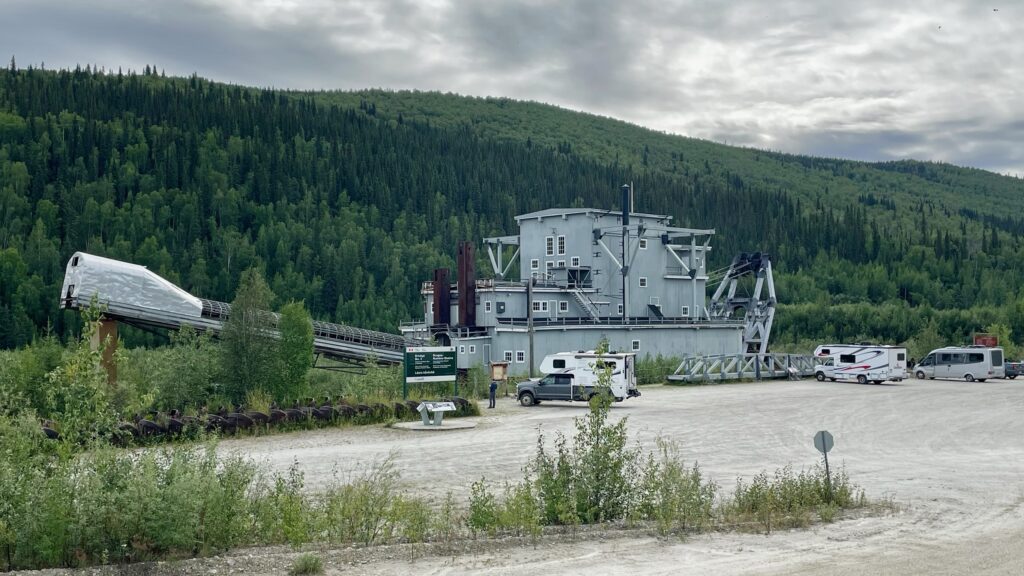


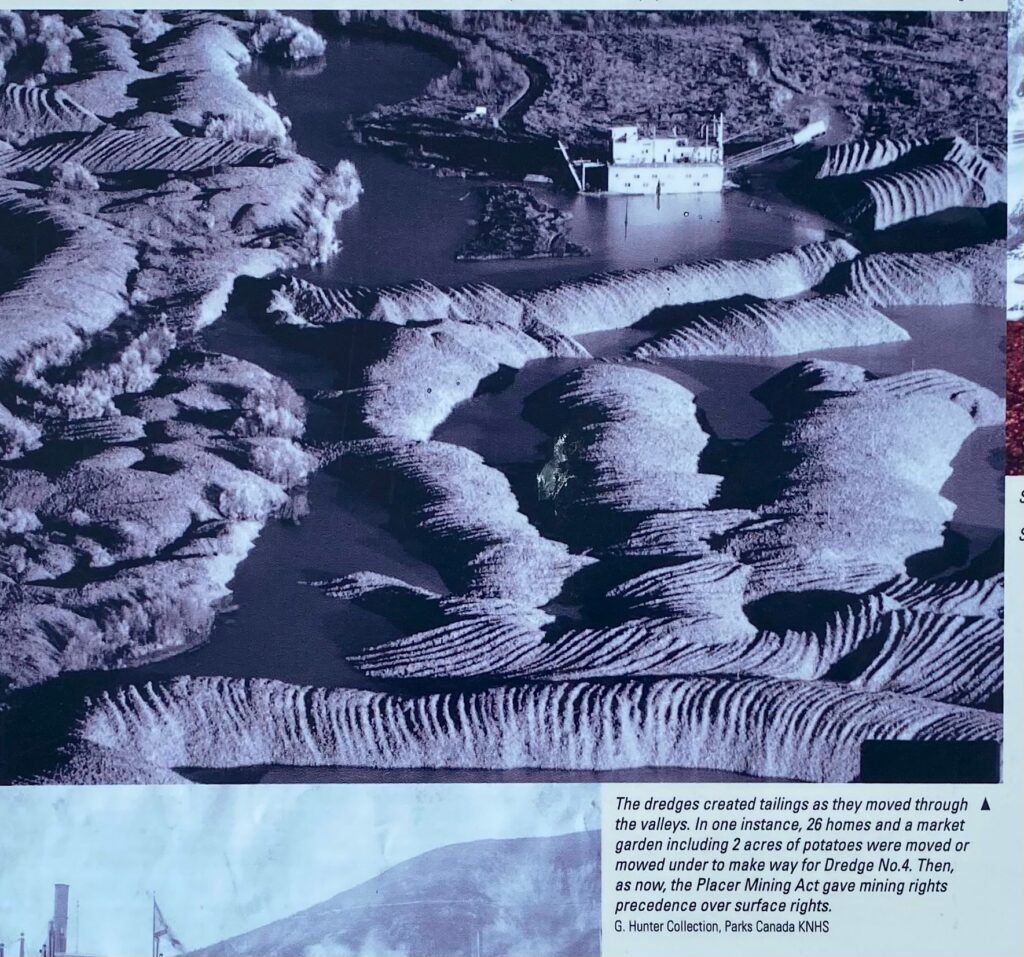
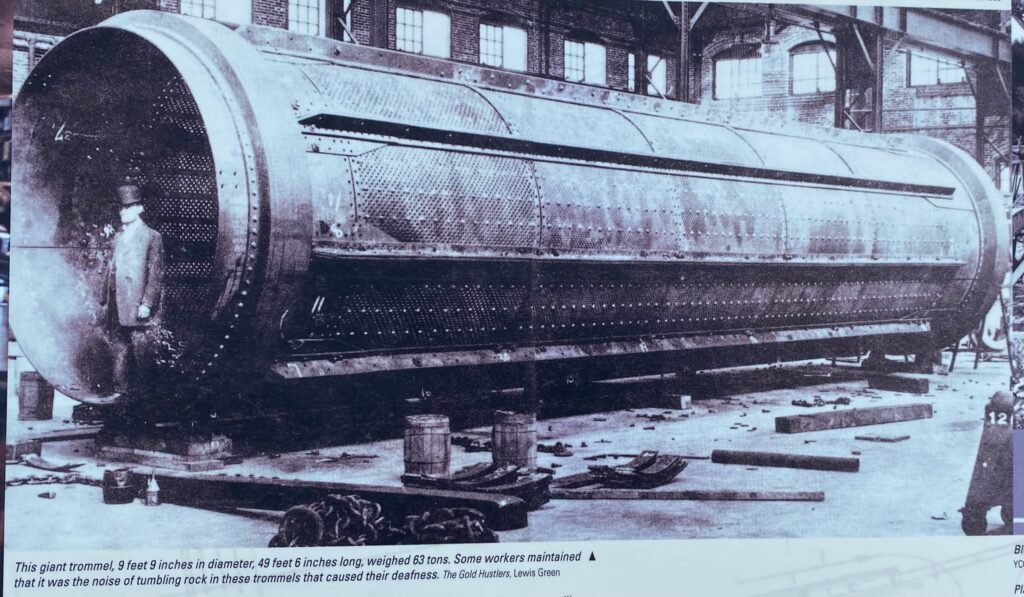
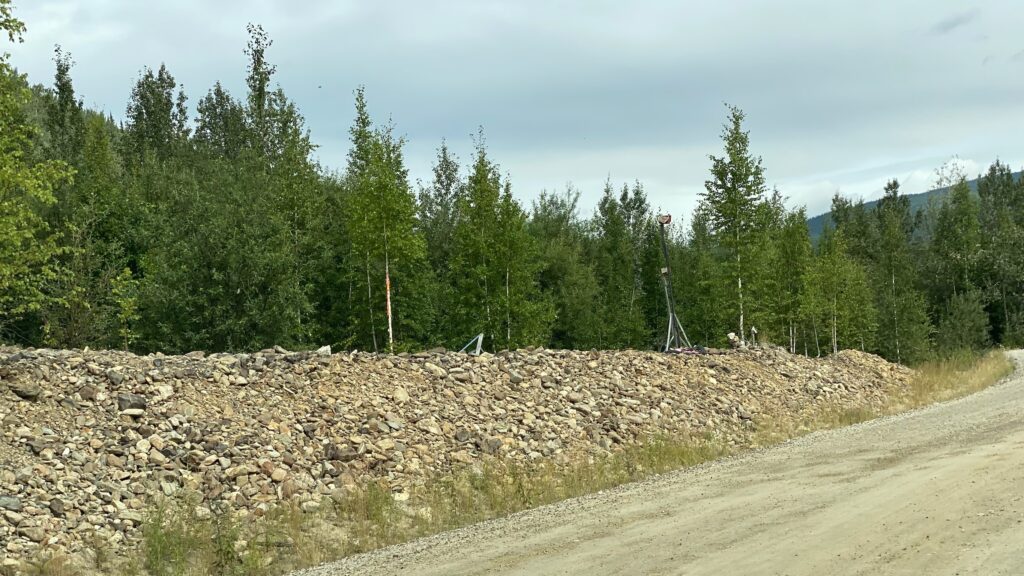
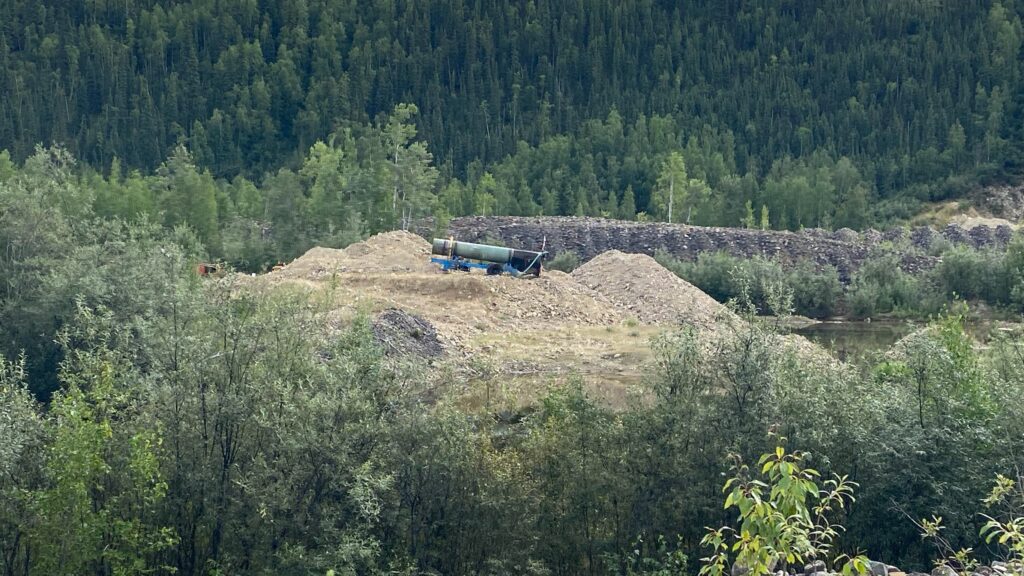
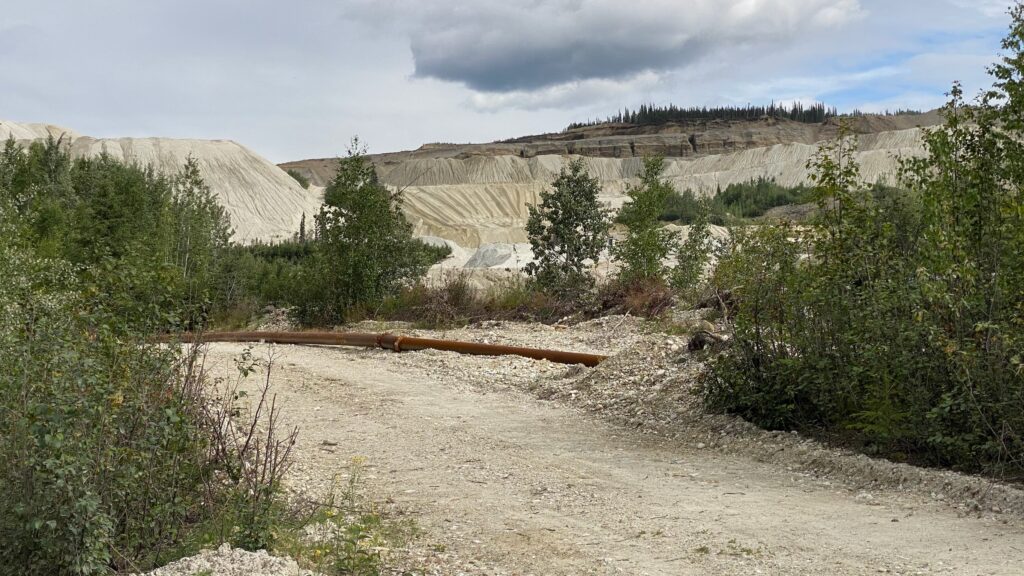
Dawson City is a place where the legacy of the Klondike Gold Rush isn’t just preserved—it’s celebrated with a journey back in time. It’s a really unique historical site!

